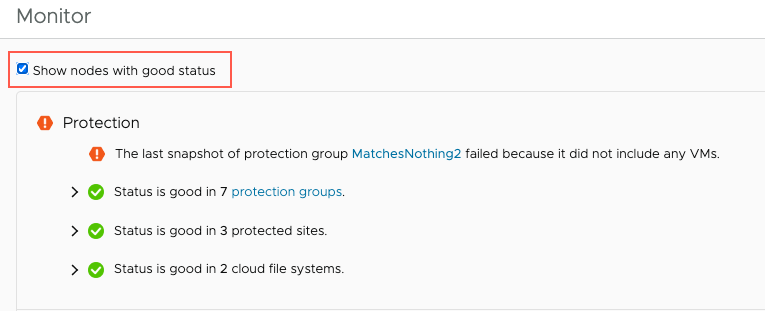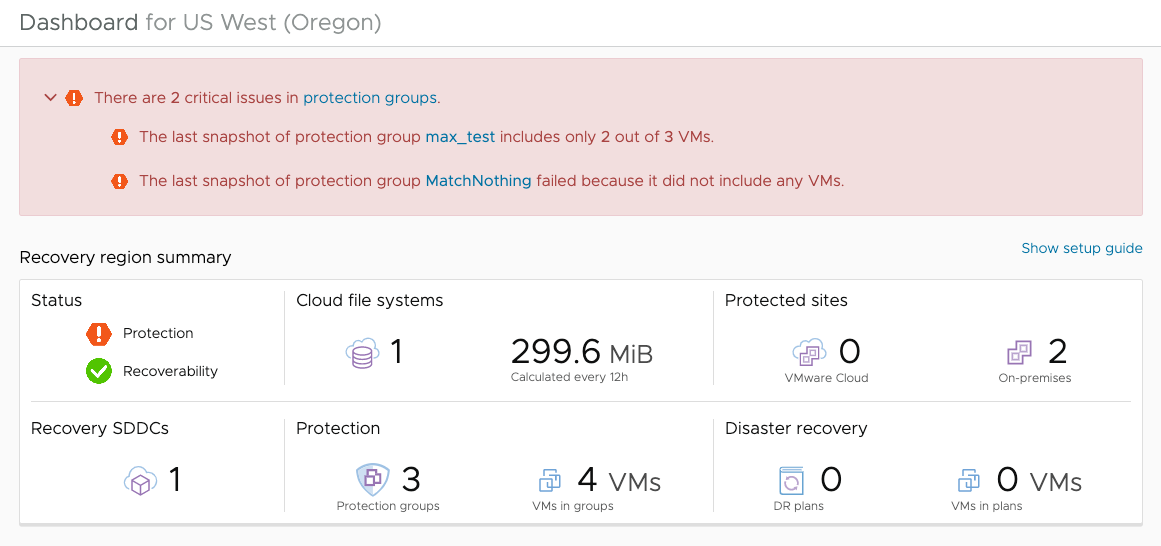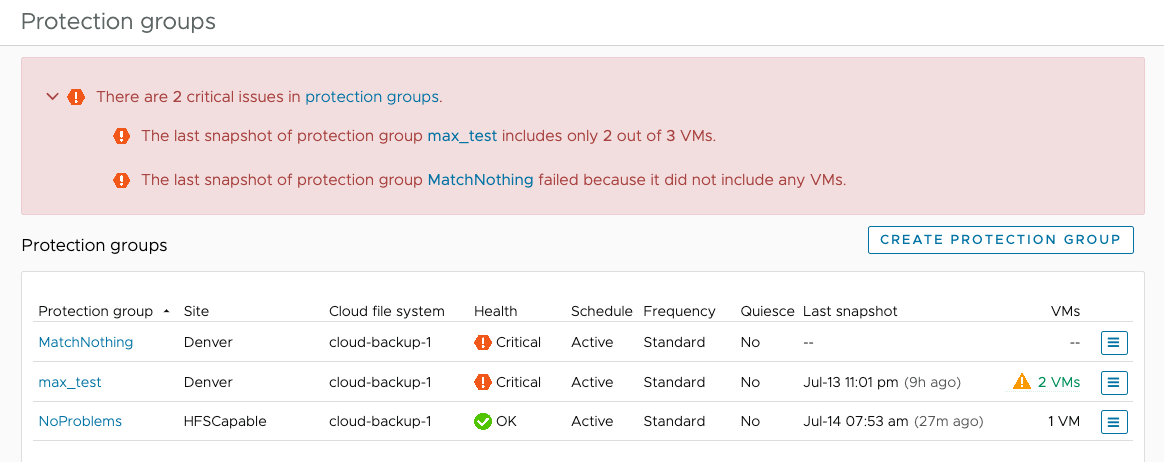The SLA status page gives you a high level operational status of your most important configurations related to VM protection and recoverability.
Service Level Agreement (SLA) Status for Protection and Recoverability
- Protection. Protected sites, protection groups, snapshots, and cloud file systems.
- Recoverability. Recovery plans, recovery SDDCs, and cloud file systems.
You can toggle the 'Show nodes with good status' button to show or hide all nodes with a good status: 
For example, the following image shows critical SLA status for two snapshots in a protection group. You can click the links for each node to investigate:

SLA banners and links also display at the top of each configuration page. For example, the following image shows SLA status banners at the top of the Protection groups page:

SLA Status Severity Levels
| Status | Meaning |
|---|---|
| Good |
SLA health is normal. Your protection groups are successfully replicating snapshots to one or more cloud file systems. Recovery plans are in compliance and ready for failover. |
| Warning |
SLA health has some issue and needs attention. Possible issues: an expired snapshot schedule, replication errors such as missing VM, connectivity issues with protected sites, and more. |
| Critical | An SLA node is either not functioning normally or might stop functioning soon. Critical issues can include loss of connectivity to a protected site, a snapshot replication failure, or a recovery plan failover malfunction. A critical status can also display if VMware Live Cyber Recovery cannot determine the status of an entity. For example, if a connector cannot connect to the cloud file system, it cannot report its status, and so after some time it is reported as critical. |
| NA/Unmonitored | VMware Live Cyber Recovery cannot determine the SLA node status. An NA or unmonitored status can occur when you create a node and the SLA Status check has not been run yet, or if you stop a protection group snapshot schedule. |